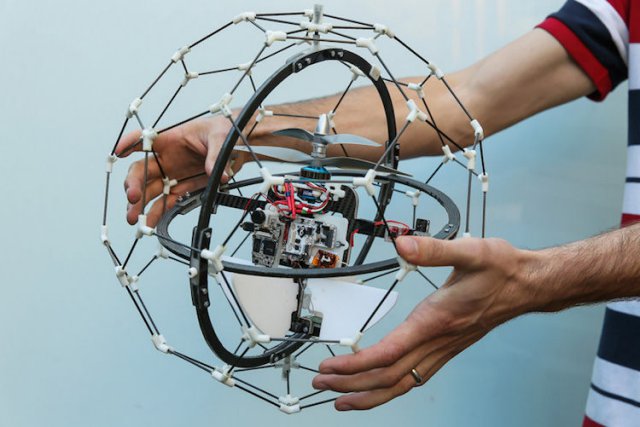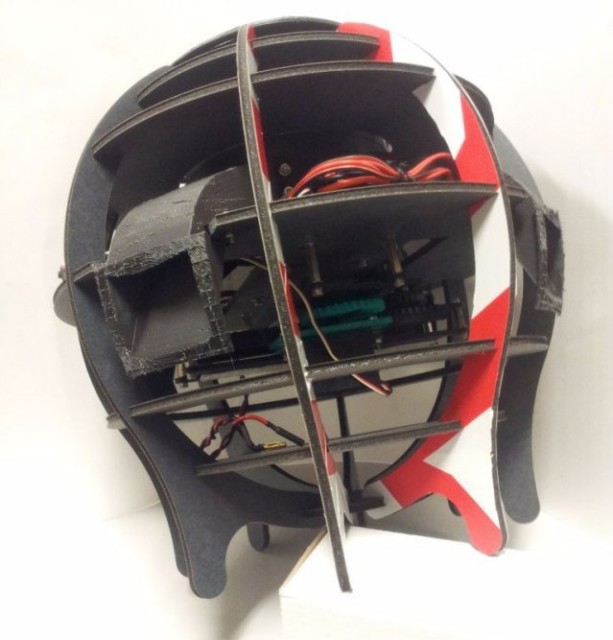 A group of 3D printing, high-tech flying machine enthusiasts, and sci-fi fans combined their know-how to design and construct a spherical drone-style aircraft for a local flying machine design competition.
A group of 3D printing, high-tech flying machine enthusiasts, and sci-fi fans combined their know-how to design and construct a spherical drone-style aircraft for a local flying machine design competition.
One of the major requirements of the competition was to create and construct a flying machine that could be regarded as “unconventional.” They shared their process, supplies, material list, and .stl files on Instructables.
As the design team are self-professed “hardcore fans of many science fiction shows,” they drew their inspiration from a few sci-fi sources they were especially enthusiastic about: The mapping drones in Prometheus, the flying camera balls known as “Kinos” in Stargate Universe, and the IT-O Interrogator droids in Star Wars. While their sources weren’t limited to these three, they did inspire the spherical shape of the final design.
With the shape of their Spherical Flying Machine established, the team moved on, researching the latest technology in spherical flying drones. The examples they liked best were the spherical flight vehicle used by Japan’s Ministry of Defense and the Gimball, known of as the “world’s first collision-proof drone designed by the École Polytechnique Fédérale de Lausanne’s (EPFL) Laboratory of Intelligent Systems (LIS). They also researched a variety of different coaxial counter rotating rotor remote control toys with a sphere as a cage on the outsides. The team felt that the latter were problematic where airflow issues were concerned, so they set about trying to eliminate that problem:
We decided to go the way of a coaxial counter rotating rotors set-up for our propulsion. This set-up allows us to control the yaw of the aircraft by adjusting the differential rotation speed of the propellers.
For the air intake, they designed a shrouded propeller system. At the bottom of the air intake, they explained, the airflow is split into four output ducts that direct the flow to the side of the sphere. For the propulsion system, they came up with a pretty ingenious approach: The propulsion system is mounted inside of a spherical cage beneath which is mounted an x-y translation stage intended to support the batteries–the heaviest component of the drone. What that means in terms of flight efficiency is that the center of gravity (of the battery) is shifted in one direction. When the aircraft’s center of gravity is altered, the whole aircraft will reorient and direct the thrust in the opposite direction. This is the kind of steering you would see, for instance, with hang gliders and small, one-man helicopters.
Many of the components of the Spherical Flying Machine were 3D printed using ABS, including the air intake duct, the airflow separator, and the output ducts. Other parts were produced from paper laminated foam using laser cutting, although the team was less-than-satisfied with the results, which weren’t as precise as they’d hoped. They used a variety of methods for assembling the parts, from screws and nuts to a cable that runs along the equator of the sphere.
See their Instructables page for the end result as well as a materials and supplies list and the .stl files, which you can print at home with your own 3D printer or upload to an online service like 3D Hubs.
Source: 3D Print

